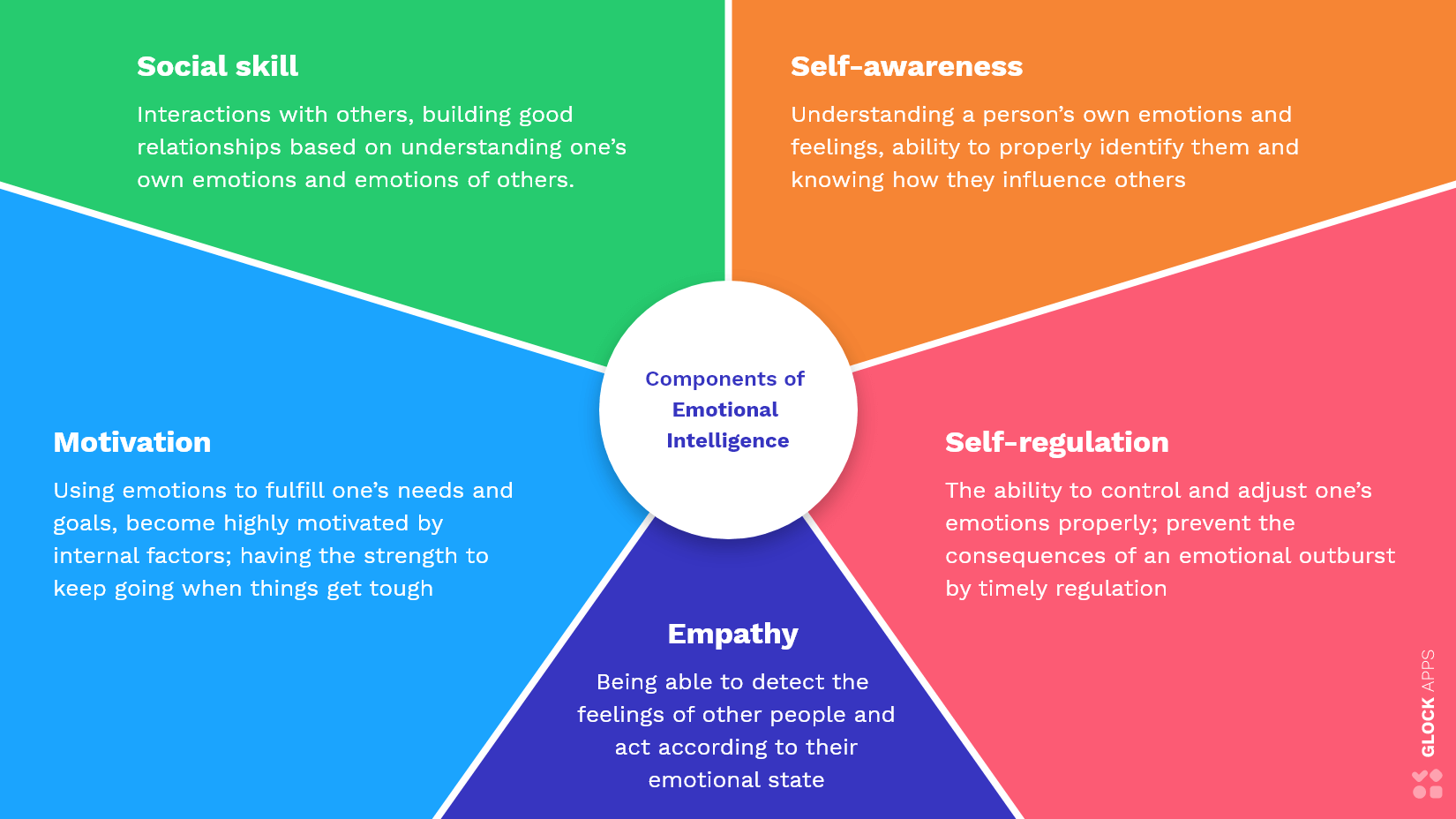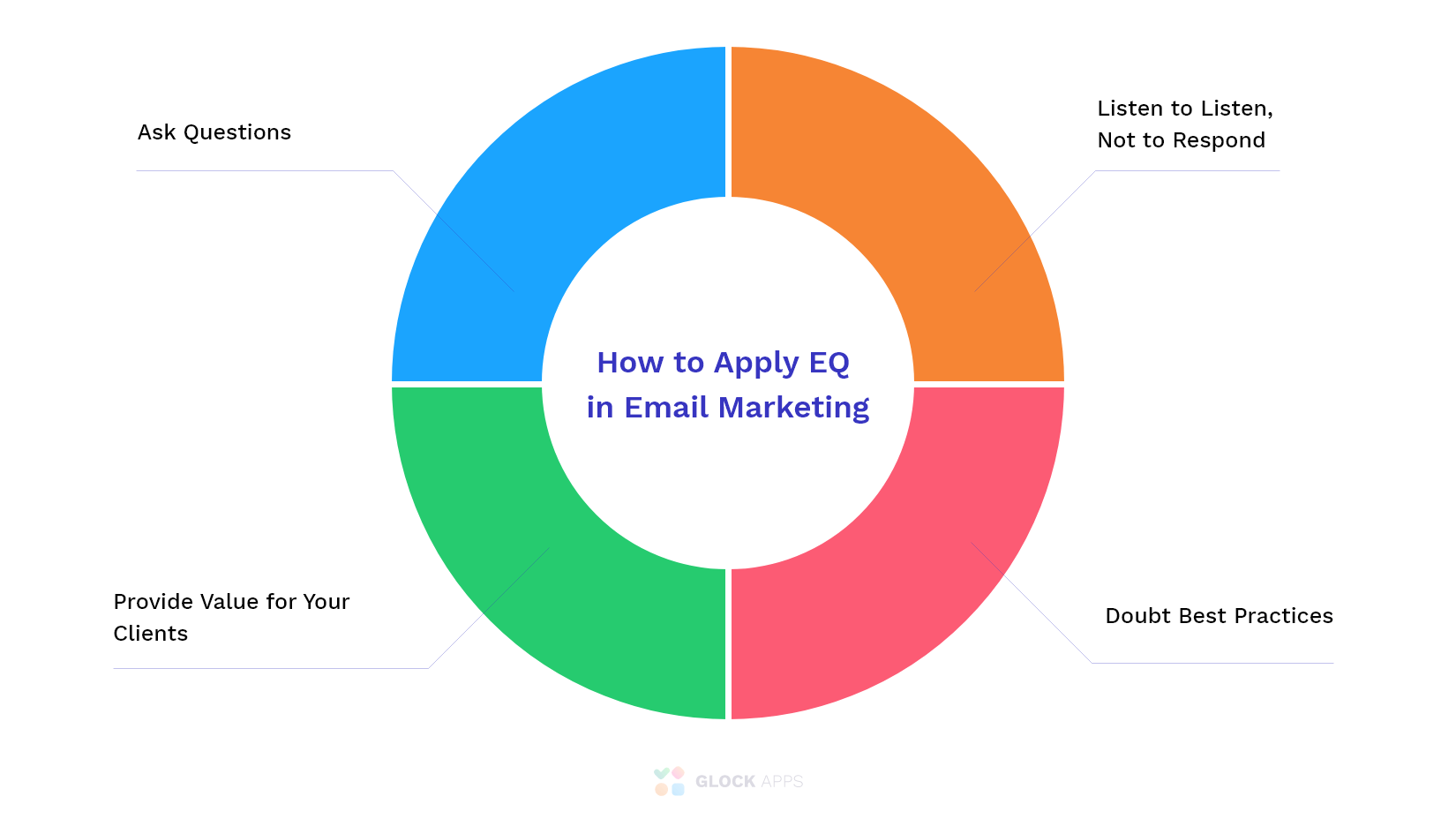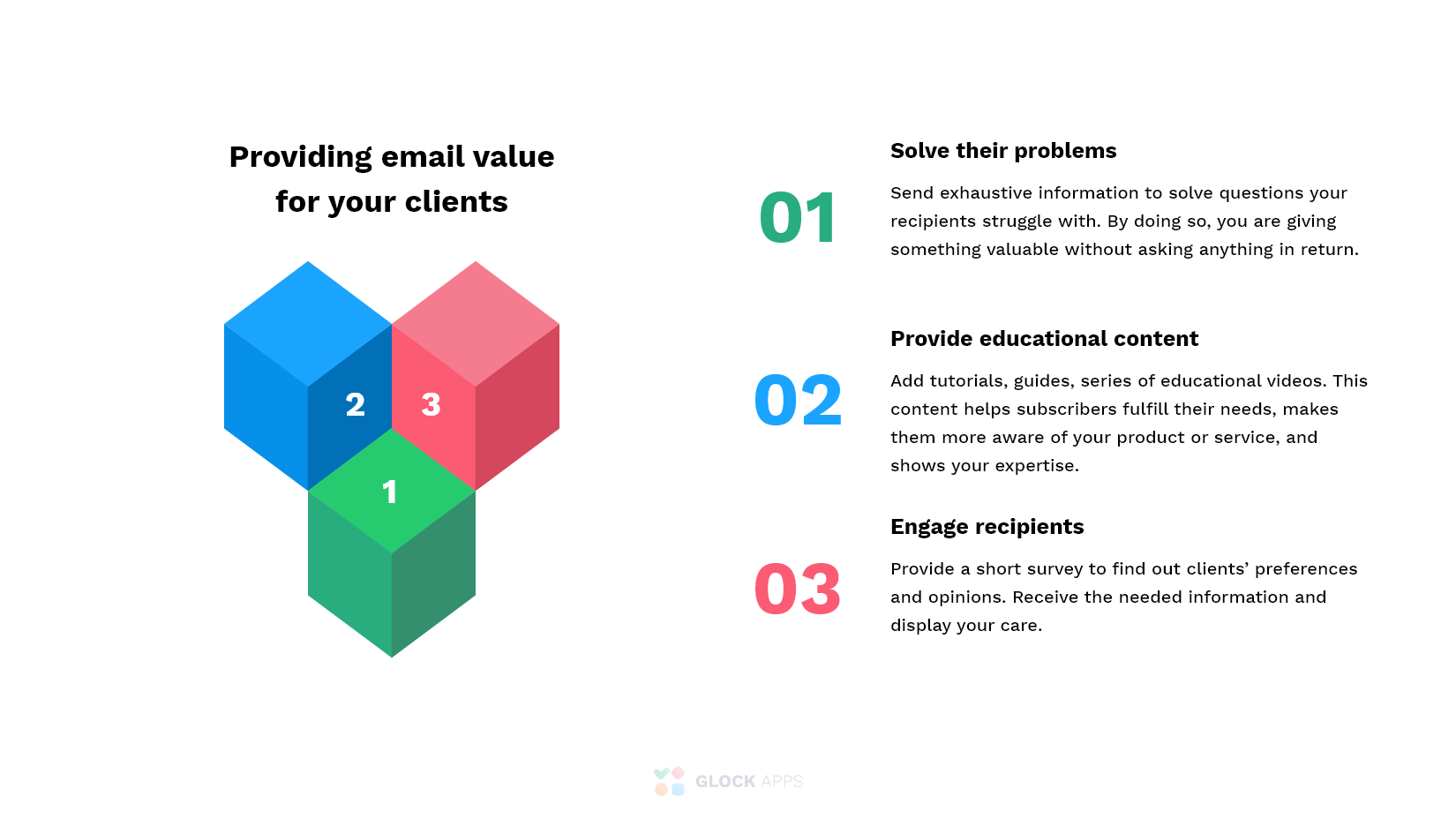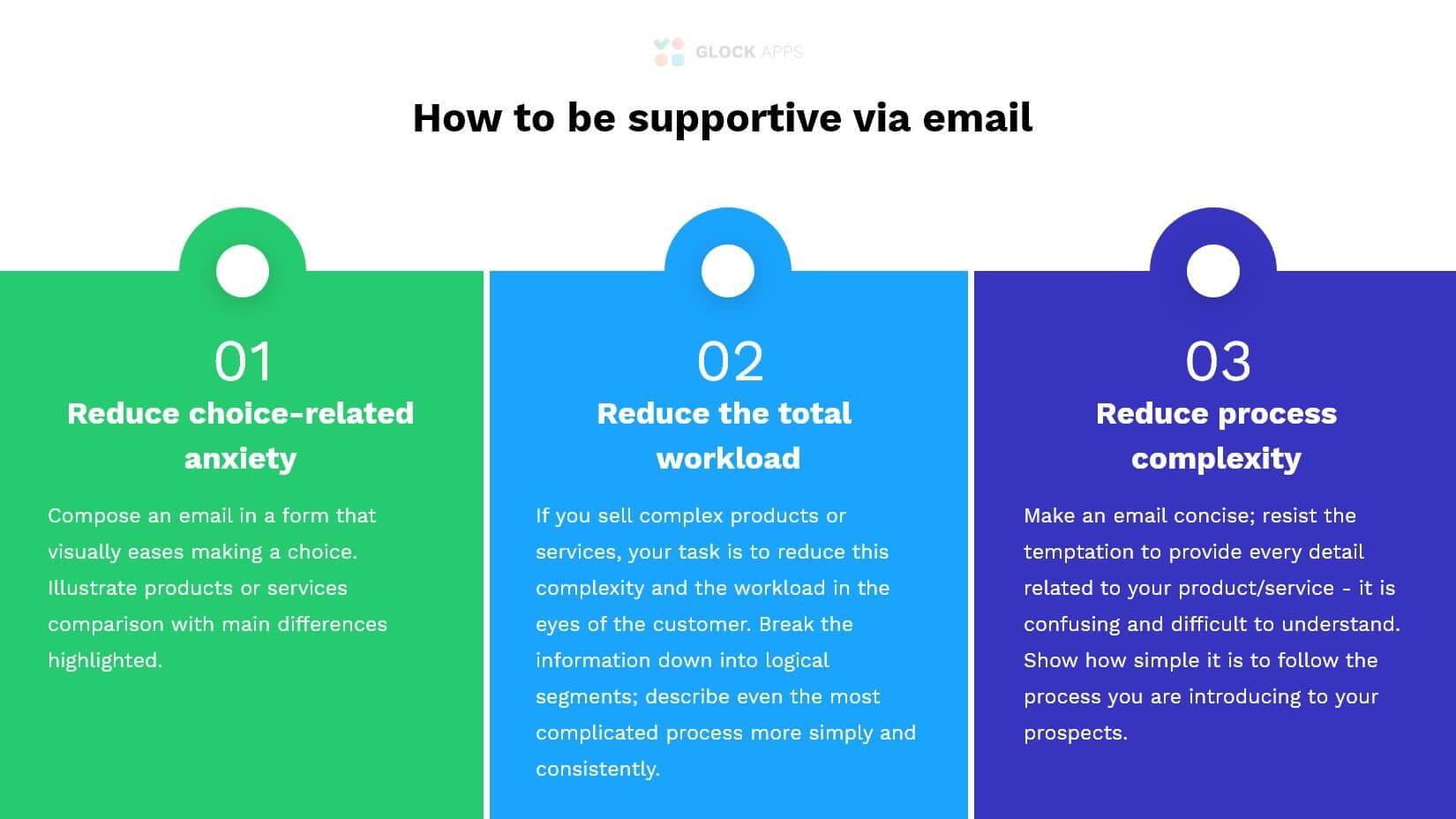How to Use Emotional Intelligence for Email Marketing Success

Whenever an email marketer presses send on a newsletter to their subscribers, they’re doing it with only the best of intentions. Often spending more time on the subject line of an email to be strong and interesting, sometimes the newsletter content can miss the mark with subscribers. What may seem obvious from an email marketer’s point of view can at times be interpreted differently by readers. One effective way marketers can avoid this issue is by understanding how their audiences consume content and through emotional intelligence, speak directly to them in their own words.
What is Emotional Intelligence?
Emotional Intelligence or EQ (Emotional Quotient) is the ability to observe and manage your own emotions and the emotions of others in positive ways to communicate effectively, emphasize with others and relieve stress.

Daniel Goleman, who first popularized the concept of EQ, stated that Emotional Intelligence consists of five elements:
- self-awareness – Understanding a person’s own emotions and feelings and being able to properly identify them and understand how they influence others.
- self-regulation – The ability to control and adjust one’s emotions properly in order to prevent the consequences of an emotional outburst.
- motivation – Using emotions to fulfill one’s needs and goals and having the strength to keep going when things get tough.
- empathy – Being able to detect the feelings of other people and respond appropriately according to their emotional state.
- social skills – Interacting with others and building good relationships based on understanding one’s own emotions and the emotions of others.
The good news about EQ is that unlike IQ, which is usually fully formed by a certain age, emotional intelligence can be built on throughout life as long as the person is committed to working on it.
EQ and Success
For most people, a successful life equals financial stability, a good job with career growth and a happy personal life. For many years, people saw IQ as a key factor to that success. However, being intellectually smart doesn’t always define the achievement of those desired life goals.
According to the Procedia Social and Behavioral Sciences study, success in both professional and personal spheres depends on 80% EQ and only 20% IQ. This is because a person with high emotional intelligence generally has a greatly developed ability to navigate through the ups and downs of life allowing them to remain flexible and resilient.
How to Apply EQ in Email Marketing
At first glance, it may seem that EQ might be better applied to someone’s personal life or to your interactions with colleagues, but think about how important communication with your executives and subscribers is. We all know how important the technical side of email marketing is, from email deliverability and email authentication, to why DMARC record is important and why we need to track email bounce rates. What may not be as obvious, however, is how emotional intelligence can have a large impact on the messages you send to both your superiors and your clients.

Ask Questions
Showing vulnerability and asking questions can be very difficult due to assumptions and discomfort, especially for those that feel the effects of imposter syndrome and feel like they should already know all the answers. Many studies, however, show that asking questions is an extremely important exercise for both personal and professional growth and encourage approaching the concept of asking questions in this way:
- Ask about the things that you don’t know about – Beat that imposter syndrome and just ask your question because you can’t gain new knowledge if you don’t communicate the obstacles you face in your everyday work. Reach out to people in your network to help clarify concepts you may not be sure about. Whether you are new to some deliverability aspects, email content, or technical sides of email marketing, don’t assume that you are asking something obvious and will be looked at as an underqualified worker.
- Ask with curiosity – When you ask questions, even if you think that they’re silly questions, understand that asking questions is not perceived as a lack of intelligence, but as an ability to be engaged and curious about a subject.
- What questions haven’t I asked that I should have? – You don’t know what you don’t know. Try looking at your project from a different perspective and think about how your clients and stakeholders may react, then try asking questions from their point of view.
- Ask people who are experts – If I am a cook who needs to prepare a dish I’ve never cooked before, I can take ingredients and start mixing them as I think I should, but wouldn’t it be better to ask a professional who has already cooked the dish a hundred times for advice and tips?
Listen to Listen, Not to Respond
Dale Carnegie gave great advice on how to “be a good listener” because listening is the key to efficient communication. Generally speaking, there are two types of listening: listening to respond and listening to listen.
If you are, in fact, engaged in the process of receiving information and insights from your stakeholders, colleagues, clients and subscribers, you won’t have to put any effort into techniques to show you’re really listening. Good listening habits provide you with valuable information that helps to balance the goals and needs of your executives with those of your subscribers.
Doubt Best Practices
Following email marketing best practices is a fast track to success; this is what we believe and what everyone tells us is true. We consider things like what time of the day I should send my emails, what the word limit for an email is and how many links I should add. An important thing to remember is that many “rules” in email marketing are pretty subjective and surprisingly some best practices might not be the best for your particular audience. To define the perfect way to engage with your subscribers, follow the list below:
- Be thoughtful about your clients first; don’t assume they will like anything you send their way; be sensitive to their needs.
- Differentiate yourself. By altering best practices in accordance with your recipients’ needs, your emails will stand out to them more.
- Test different emails to see which ones perform better; you might be surprised at the results you get.
- Monitor your results. If you are not looking at the feedback from your email marketing campaign, there is no way you will find out about the preferences of your audience.
- Collect as much data as possible from your past campaigns. Backing up your results with numbers will make conversations with your executives easier because you will have information to point to as a basis for your decisions.
Read how to collect data about your email authentication and domain usage in this post: How You Can Leverage the DMARC Analytics to Fix Deliverability Issues
What is Your Email Value for the Client?
What are you trying to achieve with your email marketing campaign? Of course, the first thing that comes to mind is money, because revenue is the main reason for any business. In the context of email marketing, however, if you want something from people, you have to offer them something in return. Whether it’s information or content, email is never about you and it’s not about the product either, it’s about using your EQ skills to meet the needs of your clients.

How to provide email value for your clients:
- Solve their problems – Providing content that helps clients solve their problems is a powerful tool as you are giving something valuable to them without necessarily asking for anything in return.
- Provide educational content – Educational content helps subscribers fulfill their needs, makes them more aware of your product and/or service and shows off your expertise which is a great tool to build their trust.
- Engage recipients – If you’re not exactly sure what content suits your audience best, just ask them by sending a short survey to find out their preferences and opinions. Apart from receiving the needed information, you will also show them that you care about their wants and needs. A good practice is to open your own inbox and analyze what email content stands out to you and what messages bring you value and why.
Fear Strategy vs Support
Ethical email marketing is a concept where marketers provide help to their clients to help them reach their goals and by doing so, reach their own goals at the same time. Good ethical marketing cannot happen when a fear strategy like the fear of missing out is being used because it leads to stress and negative emotions. This is not the message you want to send to your clients.
How, in that case, should marketers explain to their subscribers that it’s their last chance to use a service or buy a product because it’s limited or prices will go up without becoming a source of their stress for example? The best way to go about this is to imagine that you are talking to a good friend, that you’re going to a party and you want your friend to join. You’d probably say something like, “Hey, I’m going to this awesome party and I’d really enjoy your company. Would you come?” If you were to use the fear strategy in this situation you might say something like, “If you’re not going to this party you’ll miss out on the best thing that ever happened in your life and I’ll never talk to you again.” That doesn’t sound right, does it?
There is always a way for marketers to balance out their emails to be transparent about their product or service without making recipients feel emotionally pressured and stressed out about not making a purchase right away.

Instead of using a fear strategy, be supportive. Here are three ways to provide support to your clients in emails:
- Reduce choice anxiety – When a person opens an email and the information just swoops at them all at once, the decision-making process becomes very complicated. Don’t stuff the email with secondary information and don’t try to cram all the options you can provide into one paragraph. To create clear content for the recipient and show all the options of a product and/or a service you may have, use visual hierarchies and compare the main features of the most expensive plan you offer to the other options that your company provides. This reduces the overall level of anxiety connected to the decision-making process.
- Reduce the total workload – If your product is not that easy to engage with and needs a client to obtain new knowledge before starting to use it, your goal as a marketer is to show them that your product is not as intimidating as it appears. Break your product information down into logical segments and don’t overload on the details to reduce total workload and remove unnecessary anxiety.
- Reduce process complexity – When marketers are selling a product and/or service, they often want to show all the features and details in an email so the client will have no questions when it actually can be perceived as overwhelming and difficult. Simplicity is the key in this situation; show how to use your service and/or product in a clear and concise way to make it easier for your customer to engage.
Strategy and Tactics
If the email marketing strategy is the foundation marketers use to build success on, tactics are the strategy marketers use to build on their foundations in order to reach their shorter-term goals. Apart from outlining specific steps for strategy and tactics, marketers should also take into account the perspective of stakeholders as well as clients:
- When defining both strategy and tactics it’s common for the number of steps involved to become overwhelming. It’s recommended to simply make a document and write down all the steps that need to be taken with a ranking between 1 and 10. This will help marketers understand what exactly should be the focus of their customers’ attention in the first place.
- Use your EQ when defining strategy and tactics with stakeholders and coworkers within your own organization. Make sure they are engaged in the conversation, listen to what they have to say, ask questions, and be curious about why they want, what they want and how you can assist them in achieving that.
- Analyze the impact you will achieve with every outlined tactic. Will they help in reaching your goal? Have they worked before?
- Look at your content from a subscriber’s standpoint and ask yourself why they should care about what you have to say. It may seem harsh, but is very helpful for building empathy and understanding of your audience faster.
Metrics: Talking to Executives
When it comes to email marketing, it’s often difficult to talk about metrics with executives; often because what they may think is important is only one part of a large gamut of important metrics in the grand scheme of things. Usually, in conversations with higher-ups, they would ask about metrics like open rates, click-through rates and unsubscribing rates because from their perspective this is what’s important. From your perspective, however, some important metrics can be overlooked by your executives like customer lifetime value, the time they spend on your website, how many articles they click through and how engaged the audience is. The best way to overcome this disconnection is to improve communication with executives.
How to communicate with executives:
- Use EQ to reach your executives – Even after presenting a brilliant idea to a team, it’s not guaranteed that they will get on board with it right away because everyone on the team is coming from a different perspective. Don’t assume that anyone can read your mind; learn their language and speak to them on their level to get your point across.
- Don’t get frustrated with the, “we’ve always done it this way,” reply – Stakeholders can show great resistance against trying new things because it might cause damages that they would then have to deal with. Don’t give up, consider viewing the idea from a different point of view and try to apply it on a smaller scale.
- Start with a small scale – You might want to try out some bold ideas that your executives aren’t totally on board with yet. Consider starting small; begin testing your idea on 1% of your total audience and increase it slowly if needed.
- Present data – Numbers are the best way to communicate with your superiors. Once you’ve tested your idea, collect as much data as possible so you don’t show up to the meeting empty-handed. Even if you’ve only tried this new technique with 1% or 10% of the total audience, if you have measurable results to show, you have leverage.
Apply Your EQ
Now it’s time to put your EQ to work, here are the key takeaways:
- Always start with yourself. Analyze your level of emotional intelligence and how you can develop it. If it is hard to start doing at work, begin with your family and friends.
- Don’t be afraid to ask questions; it will expand your knowledge and eliminate imposter’s syndrome.
- Always think about the needs of your subscribers and the viewpoints of your stakeholders. Balancing out these two sides will make your job easier and your email marketing campaigns more efficient.
- Look through your own inbox; what emails stand out to you and why?
- Talk about metrics clearly and concisely; back yourself up with data to prove your points.
It might not be easy as you look at it at first, but every good work takes time and effort and building a good relationship with your subscribers and your executives are very well worth it.
Learn More: How to Write Emails that Convert



